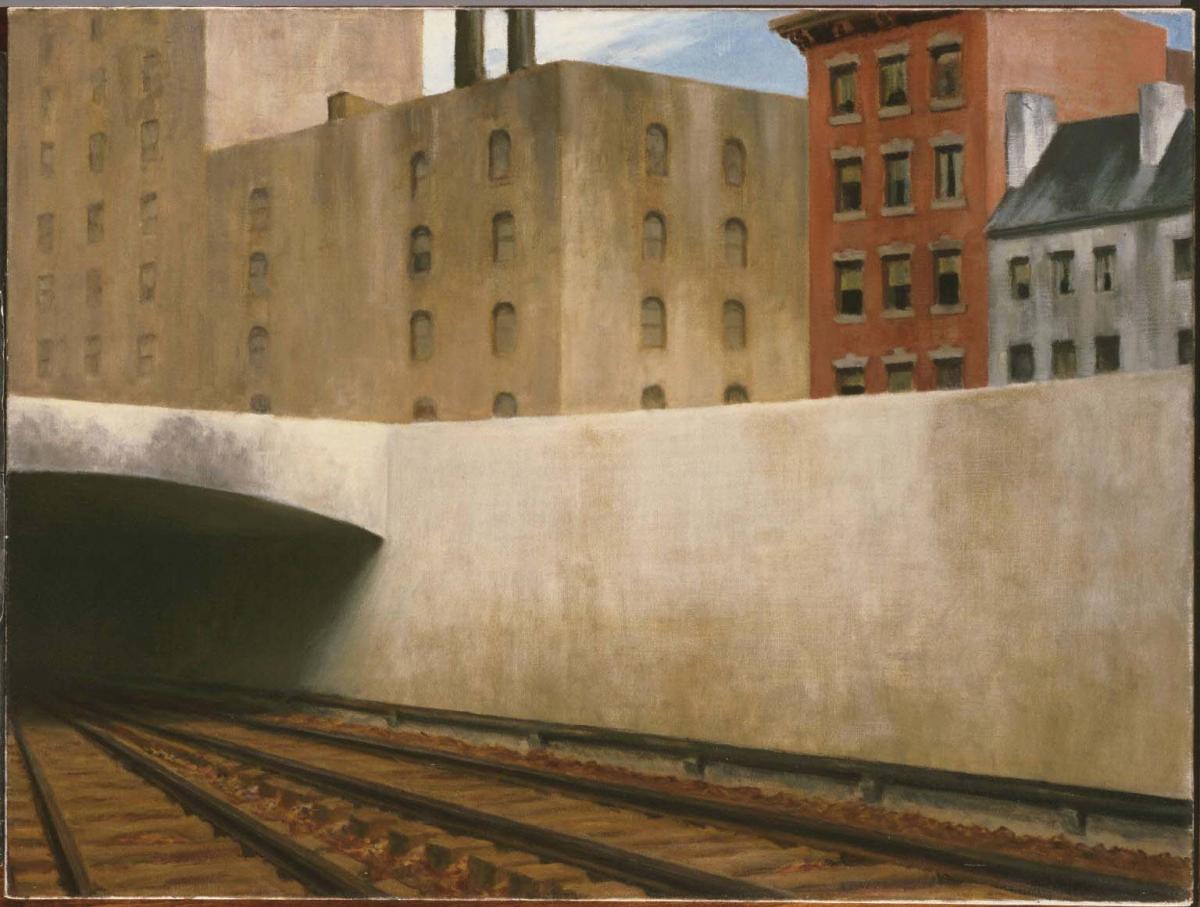Approaching a City
Edward Hopper ( 1946 )

Travel is a recurring theme in Edward Hopper’s art. Actively seeking commonplace subjects, he often gave more significance to the journey than to the destination. “To me,” Hopper wrote, “the most important thing is the sense of going on.” Such is the arrested, lonely feeling of Approaching a City. Characteristically, Hopper did not reveal what lay ahead, and in referring to the work, the painter said he wanted to evoke the “interest, curiosity, (and) fear” that one experiences when entering or leaving a city.
Ultimately, Approaching a City conveys a paradox of contemporary life. The unseen traveler of the image is caught in a curious limbo and isolation between city and country. The railroad made faraway places accessible to ordinary people, but it also made those places less distinctive. Hopper, by asserting the anonymity of the place and not revealing the train’s destination, suggests a future that is at once both predictable and unknown.